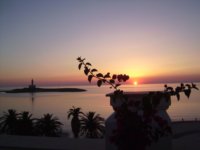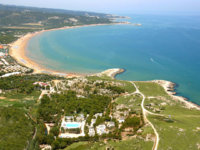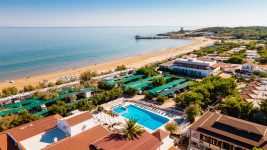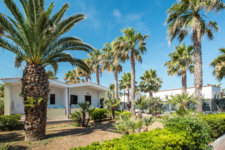photo by foggiatoday.it
A fascinating burial complex on the outskirts of Vieste
In addition to the most famous Necropolis “La Salata”, in the territory of Vieste there is another necropolis, close to the center: that of San Nicola di Myra.
The Necropolis of San Nicola di Myra, located in the Pantanello district of Vieste, represents an archaeological complex of extraordinary importance. This site, located on the northern outskirts of the town and close to the beach, stands out for its unique position: resting on a hill and surrounded by modern buildings, it testifies to the ancient coexistence between past and present.
The Church and the Rock Caves: A Heritage to Discover
The fulcrum of the complex is the small rock church dedicated to San Nicola, located inside a stone forepart. This church, once richly frescoed, reveals the profound spirituality that permeated the place. The site's caves, divided into four large sections carved into the rock, host different types of tombs, from crypts to external tombs, demonstrating the complexity and richness of the funerary site.
A Link with Antiquity and the Greco-Roman World
The Necropolis of Saint Nicholas of Myra is not only a site of the late ancient and early Middle Ages, but also connects to the Greco-Roman era. Once located on the seashore, within the port basin of the ancient port of Aviane, the caves of San Nicola represent an important linguistic and cultural document of ancient Daunia. This place has welcomed Greek exiles since the XNUMXth century BC
Conservation Issues and Hopes for the Future
Despite its undoubted historical and cultural importance, the Necropolis of Saint Nicholas of Myra suffers from abandonment and degradation. Recovery interventions are necessary to preserve this unique heritage. Fortunately, recent initiatives by local authorities suggest a growing awareness of the importance of the site and the need to preserve it for future generations.
An open-air museum, between history and myth
The Necropolis of Saint Nicholas of Myra represents not only an important archaeological site, but also an open-air museum that tells stories of bygone eras. Every cave, every fresco, every tomb speaks of a past that has a lot to teach. It is a place that deserves to be enhanced and protected, a hidden treasure that tells the story of Vieste, a crossroads of cultures and peoples.
Unfortunately at the moment the site cannot be visited but it is hoped that it will be able to be visited again in the near future thanks to a large recovery project of the archaeological heritage of the Vieste area, as has been done for years with the sanctuary of the Vieste lighthouse.










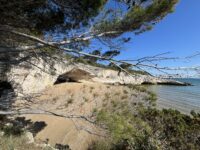
 Turismovieste.it is created by
Turismovieste.it is created by 



